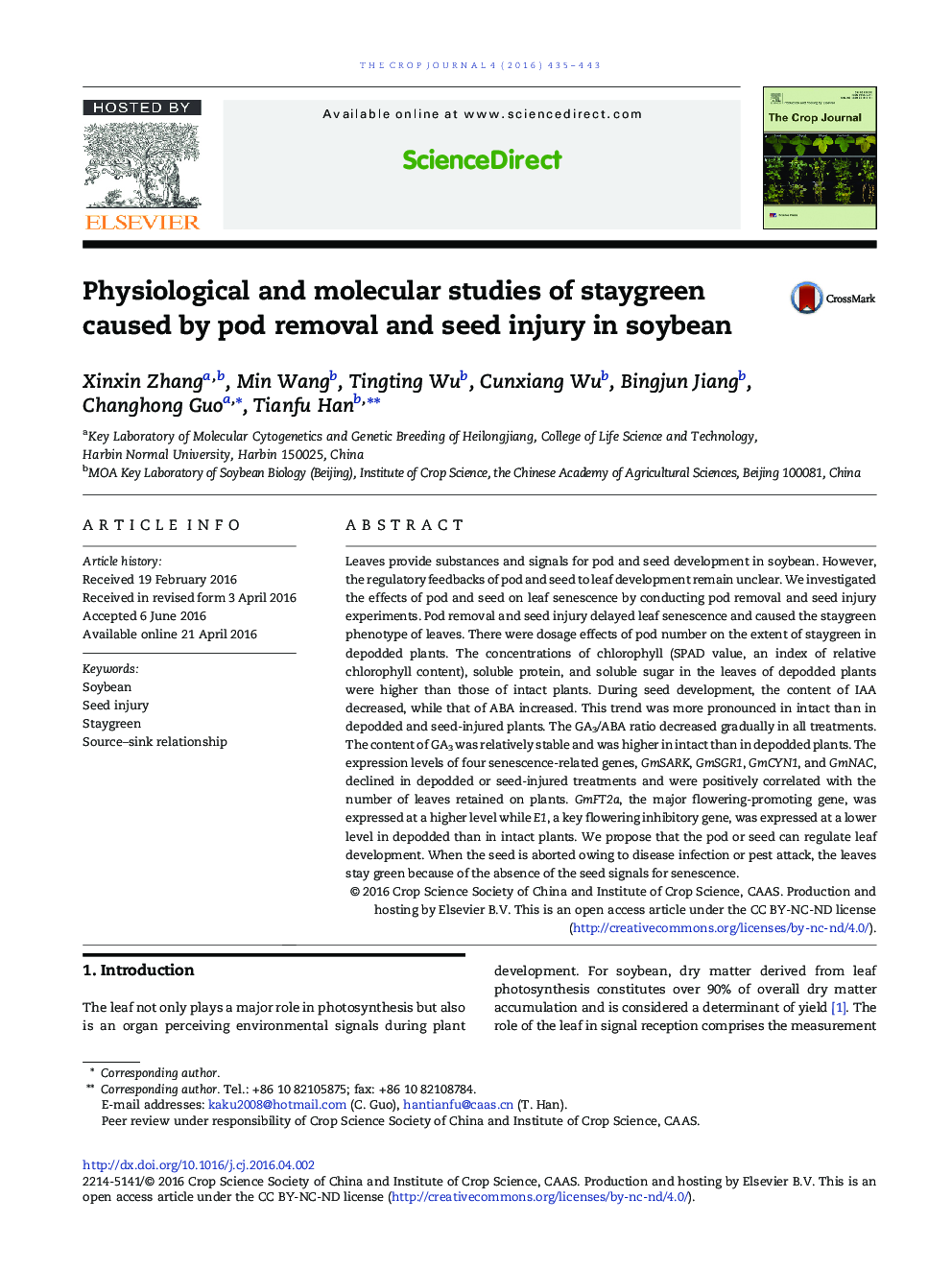| Article ID | Journal | Published Year | Pages | File Type |
|---|---|---|---|---|
| 5520786 | The Crop Journal | 2016 | 9 Pages |
Leaves provide substances and signals for pod and seed development in soybean. However, the regulatory feedbacks of pod and seed to leaf development remain unclear. We investigated the effects of pod and seed on leaf senescence by conducting pod removal and seed injury experiments. Pod removal and seed injury delayed leaf senescence and caused the staygreen phenotype of leaves. There were dosage effects of pod number on the extent of staygreen in depodded plants. The concentrations of chlorophyll (SPAD value, an index of relative chlorophyll content), soluble protein, and soluble sugar in the leaves of depodded plants were higher than those of intact plants. During seed development, the content of IAA decreased, while that of ABA increased. This trend was more pronounced in intact than in depodded and seed-injured plants. The GA3/ABA ratio decreased gradually in all treatments. The content of GA3 was relatively stable and was higher in intact than in depodded plants. The expression levels of four senescence-related genes, GmSARK, GmSGR1, GmCYN1, and GmNAC, declined in depodded or seed-injured treatments and were positively correlated with the number of leaves retained on plants. GmFT2a, the major flowering-promoting gene, was expressed at a higher level while E1, a key flowering inhibitory gene, was expressed at a lower level in depodded than in intact plants. We propose that the pod or seed can regulate leaf development. When the seed is aborted owing to disease infection or pest attack, the leaves stay green because of the absence of the seed signals for senescence.
